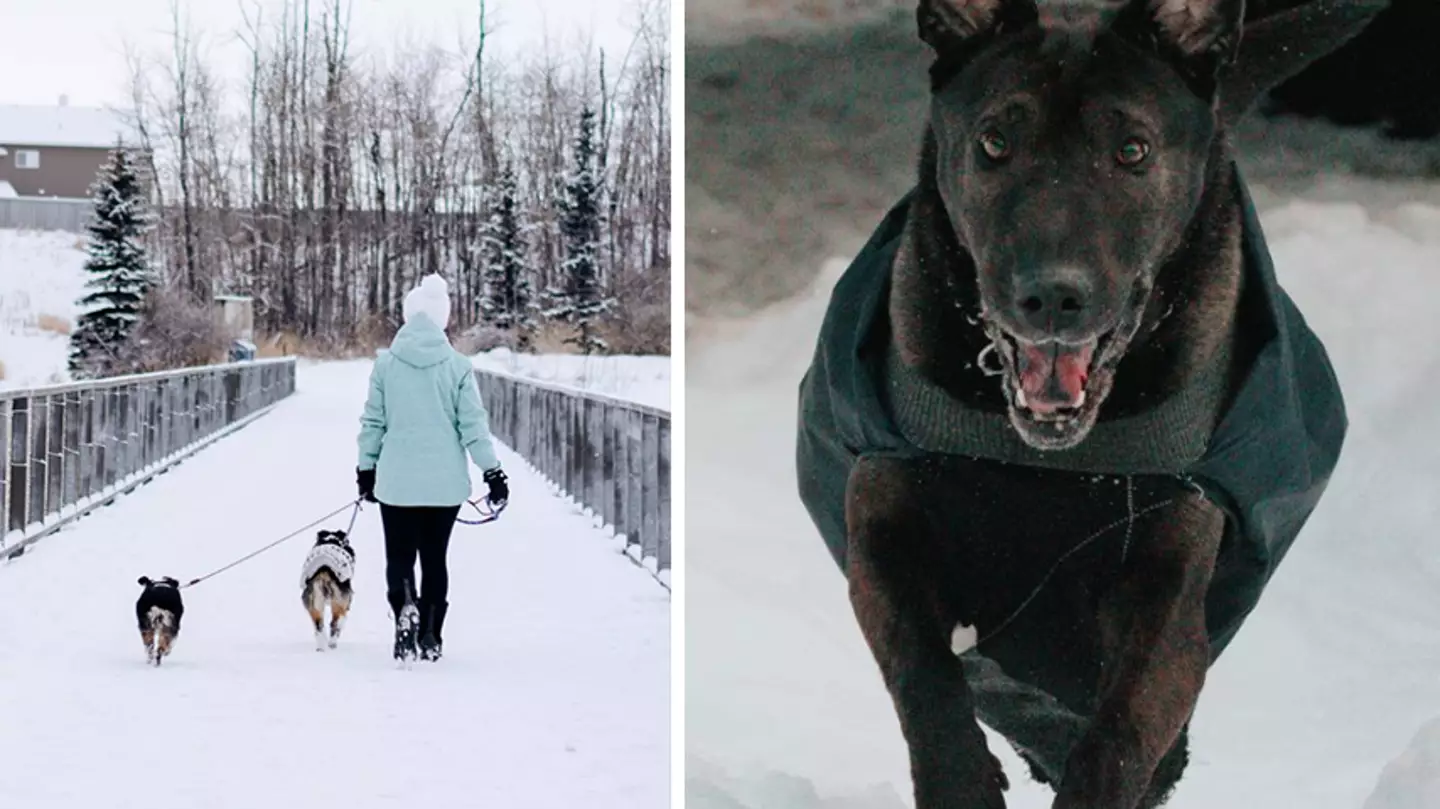
Frank Sinatra wasn’t wrong when he crooned that the weather outside is frightful; it is freezing here in the UK right now.
December really is in full swing at the moment, with huge swathes of the country being battered by Storm Arwen. Meanwhile, the rest of us are feeling the usual wintry conditions as the temperatures plummet to below freezing – a crisp frost icing the grass and blustering winds leaving us with an icy chill.

But while we can simply put on a few extra layers and a big woolly coat, spare a thought for our pet pups, who are really feeling the cold right now.
Advert
Our darling doggos may always be wearing a fur coat, but that doesn’t mean they’re immune to significant drops in temperature.
But we seem to overlook our pets in the winter months. Data from pet insurance company Bought By Many shows that the cost for an insurance claim rockets when we start to feel the cold; from November to March, the average cost is around £437.
According to FetchPet, the size of your pup and the thickness of their coat will help determine when it’s safe for them to go outside.

Small or medium-sized dogs with thin coats could be at risk if they go out if the temperature is 7C or lower.
Advert
However, bigger dogs with thicker coats, such as Siberian huskies, are more suited to colder climates.
Fetch Pet veterinarian Dr Aliya McCullough warns that all dogs, regardless of size, face higher chances of frostbite and hypothermia if they’re out at temperatures below -6C.
However, there’s some fairly simple tips to keep our furry friends safe throughout this cold snap.
“Temperatures tend to be much warmer during the day, so its best to avoid early morning or late evening walks,” veterinary nurse Sarah James tells Tyla. “It’s best to go on shorter walks but more frequently - the longer your dog is outside, the lower their body temperature will drop.

“It’s also important to keep your dog on a lead. If you normally give your pet some freedom and remove the lead, winter is not the time to do it. As the seasons change and the ground gets covered in frost/snow, dogs might not see deep patches or unsafe areas.”
Advert
Sarah adds that it’s equally vital to keep an eye on our pet pooch’s paws, as winter time is particularly tough when out for walks.
“With the dampness from rain and snow, toxic chemicals, and salt left on the road, it is important to take good care of your dog’s paws by using a damp washcloth or paper towel to avoid any skin irritation,” she explains.
Other things to keep an eye out for include anti-freeze, which is highly poisonous but irritatingly appealing to pets.

“Furry friends find anti-freeze very tasty, yet they find it very tasty, so make sure to avoid walking too close to cars or leaving your garage door open,” Sarah says.
Advert
And while it seems almost counter-intuitive, pet owners also have to ensure their pet doesn’t overcompensate for the cold weather by burning themselves.
“Dogs are just like us, on a cold morning all they want is to cosy up near a heat source,” Sarah explains. “So make sure to block off any heat source (open fires etc) around your house to prevent your pets from getting burned.”
Featured Image Credit: Pexels